Profit & Loss Worksheet-1
-
Samant bought a microwave oven and paid 10% less than the original price. He sold it with 30% profit on the price he had paid. What percentage of profit did Samant earn on the original price?
(a) 17% (b) 20% (c) 27% (d) 32%
(e) None of these
-
If 5% more is gained by selling an article for Rs. 350 than by selling it for Rs. 340, the cost of the article is:
(a) Rs. 50 (b) Rs. 160 (c) Rs. 200 (d) Rs. 225
-
If a man reduces the selling price of a fan from Rs. 400 to Rs. 380, his loss increases by 2%. The cost price of the fan is:
(a) Rs. 480 (b) Rs. 500 (c) Rs. 600 (d) None of these
-
An article when sold at a gain of 5% yields Rs. 15 more than when sold at a loss of 5%. Its cost price would be:
(a) Rs. 150 (b) Rs. 200 (c) Rs. 250 (d) Rs. 300
-
A shopkeeper sells an article at a loss of
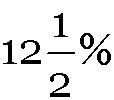 . Had he sold it for Rs. 51.80 more, he would have earned a profit of 6%. The cost price of the article is:
. Had he sold it for Rs. 51.80 more, he would have earned a profit of 6%. The cost price of the article is:
(a) Rs. 280 (b) Rs. 300 (c) Rs. 380 (d) Rs. 400
-
The difference between the cost price and sale price of an article is Rs. 240. If the profit is 20%, the selling price is:
(a) Rs. 1240 (b) Rs. 1400 (c) Rs. 1600 (d) None of these
-
A dealer sold an article at a loss of
 Had he sold it for Rs. 100 more, he would have gained
Had he sold it for Rs. 100 more, he would have gained  . To gain
. To gain 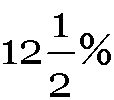 , he should sell it for:
, he should sell it for:
(a) Rs. 850 (b) Rs. 925 (c) Rs. 1080 (d) Rs. 1125
-
The cash difference between the selling prices of an article at a profit of 4% and 6% is Rs. 3. The ratio of the two selling prices is:
(a) 51 : 52 (b) 52 : 53 (c) 51 : 53 (d) 52 : 55
-
A shopkeeper sells two watches for Rs. 308 each. On one he gets 12% profit an on the other 12% loss. His profit or loss in the entire transaction was:
(a) Neither profit, nor loss (b) 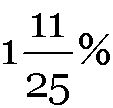 loss
loss
(c) 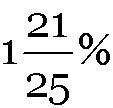 profit (d)
profit (d) 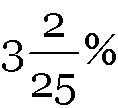 loss
loss
-
A man sells two flats at the rate of Rs. 1.995 lakhs each. On one he gains 5% and on the other, he loses 5%. His gain or loss percent in the whole transaction is:
(a) 0.25% loss (b) 0.25% gain (c) 2.5% loss (d) 25% loss
-
A man sells two commodities for Rs. 4000 each, neither losing nor gaining in the deal. If he sold one commodity at a gain of 25%, the other commodity is sold at a loss of:
(a) 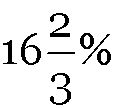 (b)
(b) 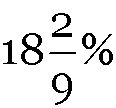 (c) 25% (d) None of these
(c) 25% (d) None of these
-
A house and a shop were sold for Rs. 1 lakh each. In this transaction, the house sale resulted into 20% loss whereas the shop sale resulted into 20% profit. The entire transaction resulted in:
(a) no loss, no gain (b) loss of Rs.  lakh
lakh
(c) loss of Rs.  lakh (d) gain of Rs.
lakh (d) gain of Rs.  lakh
lakh
-
Ranjan purchased 120 tables at a price of Rs. 110 per table. He sold 30 tables at a profit of Rs. 12 per table and 75 tables at a profit of Rs. 14 per table. The remaining tables were sold at a loss of Rs. 7 per table. What is the average profit per table?
(a) Rs. 10.04 (b) Rs. 10.875 (c) Rs. 12.80 (d) Rs. 12.875
-
Hemant sold 10 sarees for a total profit of Rs. 460 and 12 sarees for a total profit of Rs. 144. At what profit per saree should he sell the remaining 20 sarees so that he gets an average profit of Rs. 18 per saree?
(a) Rs. 7.40 (b) Rs. 7.60 (c) Rs. 7.80 (d) Rs. 8
-
Sanket purchased 20 dozen notebooks at Rs. 48 per dozen. He sold 8 dozen at 10% profit and the remaining 12 dozen with 20% profit. What is his profit percentage in the transaction?
(a) 7.68 (b) 15 (c) 16 (d) 19.2
Answer Key:
(1)-a; (2)-c; (3)-d; (4)-a; (5)-a; (6)-d; (7)-d; (8)-b; (9)-b; (10)-a; (11)-a; (12)-b; (13)-b; (14)-b; (15)-c
 . Had he sold it for Rs. 51.80 more, he would have earned a profit of 6%. The cost price of the article is:
. Had he sold it for Rs. 51.80 more, he would have earned a profit of 6%. The cost price of the article is: Had he sold it for Rs. 100 more, he would have gained
Had he sold it for Rs. 100 more, he would have gained  . To gain
. To gain  , he should sell it for:
, he should sell it for: loss
loss  profit (d)
profit (d)  loss
loss (b)
(b)  (c) 25% (d) None of these
(c) 25% (d) None of these lakh
lakh lakh (d) gain of Rs.
lakh (d) gain of Rs.  lakh
lakh